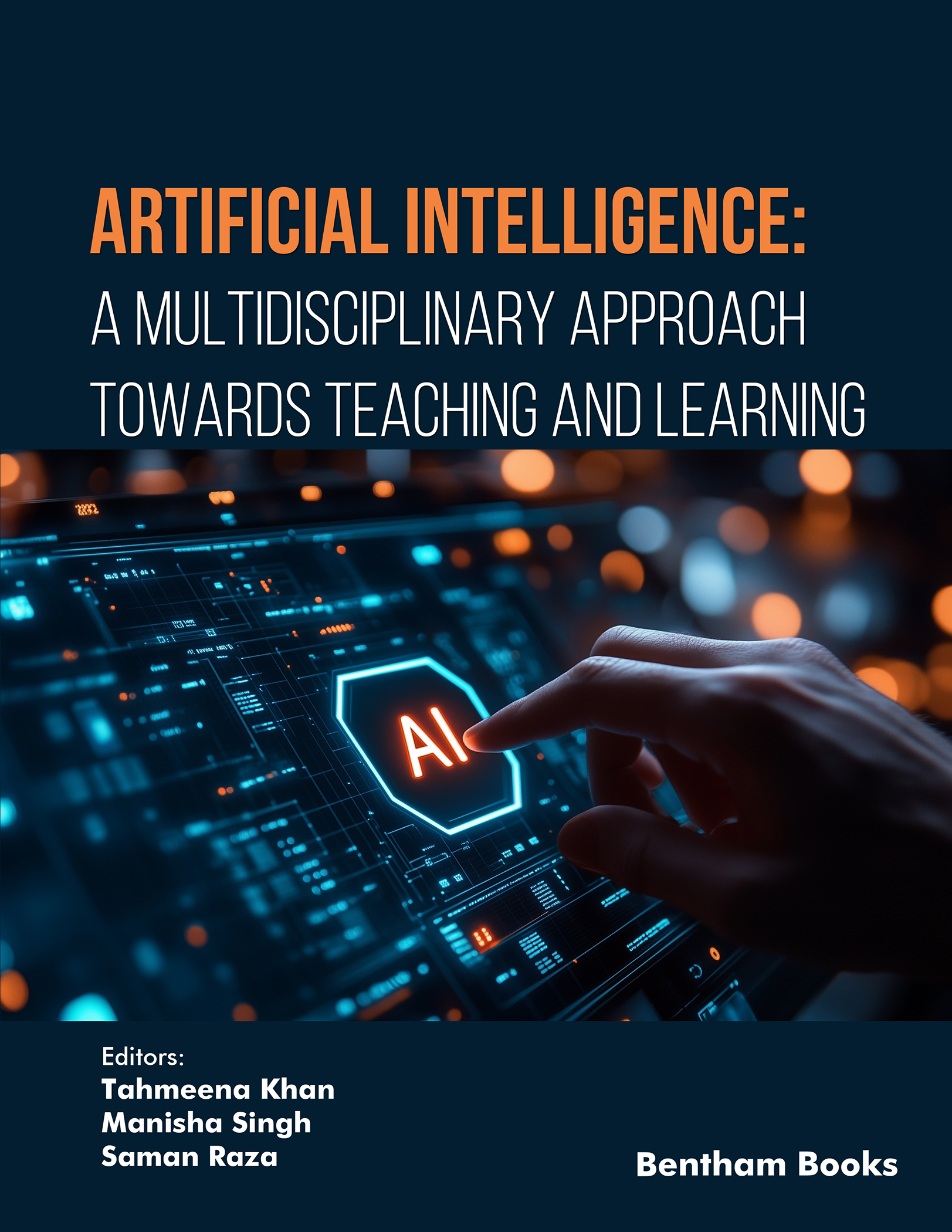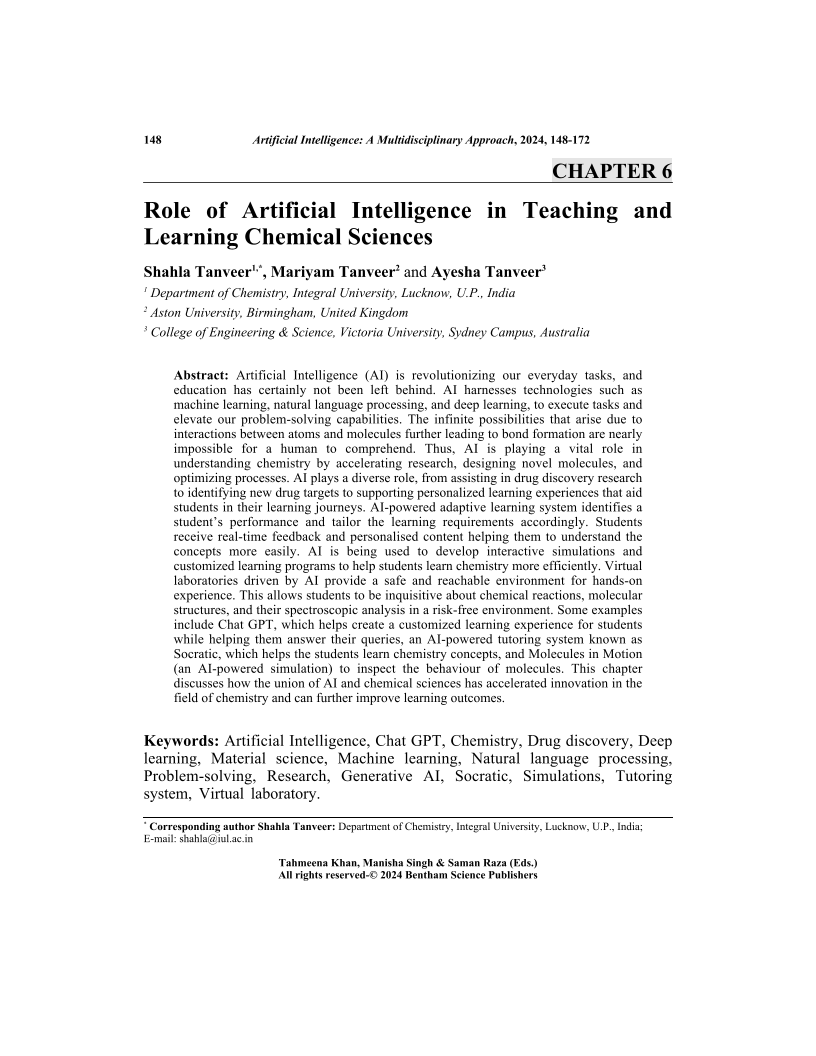Role of Artificial Intelligence in Teaching and Learning Chemical Sciences

- Authors: Shahla Tanveer1, Mariyam Tanveer2, Ayesha Tanveer3
-
View Affiliations Hide Affiliations1 Department of Chemistry, Integral University, Lucknow, U.P., India 2 Aston University, Birmingham, United Kingdom 3 College of Engineering & Science, Victoria University, Sydney Campus, Australia
- Source: Artificial Intelligence: A Multidisciplinary Approach towards Teaching and Learning , pp 148-172
- Publication Date: November 2024
- Language: English
Role of Artificial Intelligence in Teaching and Learning Chemical Sciences, Page 1 of 1
< Previous page | Next page > /docserver/preview/fulltext/9789815305180/chapter-6-1.gif
Artificial Intelligence (AI) is revolutionizing our everyday tasks, and education has certainly not been left behind. AI harnesses technologies such as machine learning, natural language processing, and deep learning, to execute tasks and elevate our problem-solving capabilities. The infinite possibilities that arise due to interactions between atoms and molecules further leading to bond formation are nearly impossible for a human to comprehend. Thus, AI is playing a vital role in understanding chemistry by accelerating research, designing novel molecules, and optimizing processes. AI plays a diverse role, from assisting in drug discovery research to identifying new drug targets to supporting personalized learning experiences that aid students in their learning journeys. AI-powered adaptive learning system identifies a students performance and tailor the learning requirements accordingly. Students receive real-time feedback and personalised content helping them to understand the concepts more easily. AI is being used to develop interactive simulations and customized learning programs to help students learn chemistry more efficiently. Virtual laboratories driven by AI provide a safe and reachable environment for hands-on experience. This allows students to be inquisitive about chemical reactions, molecular structures, and their spectroscopic analysis in a risk-free environment. Some examples include Chat GPT, which helps create a customized learning experience for students while helping them answer their queries, an AI-powered tutoring system known as Socratic, which helps the students learn chemistry concepts, and Molecules in Motion (an AI-powered simulation) to inspect the behaviour of molecules. This chapter discusses how the union of AI and chemical sciences has accelerated innovation in the field of chemistry and can further improve learning outcomes.
-
From This Site
/content/books/9789815305180.chapter-6dcterms_subject,pub_keyword-contentType:Journal -contentType:Figure -contentType:Table -contentType:SupplementaryData105

